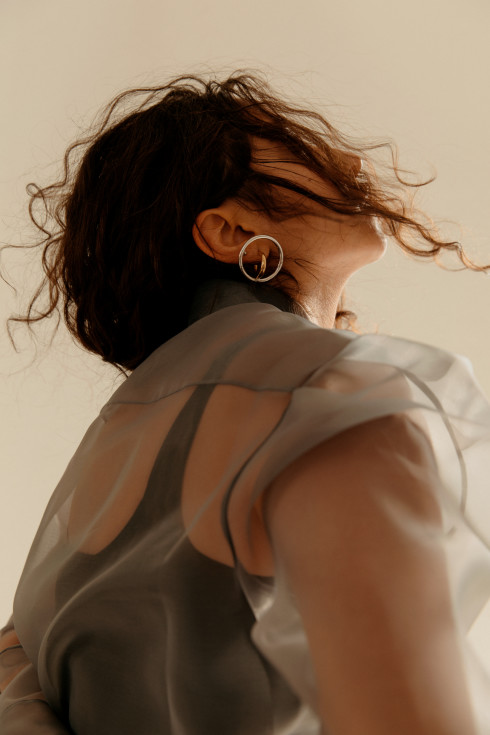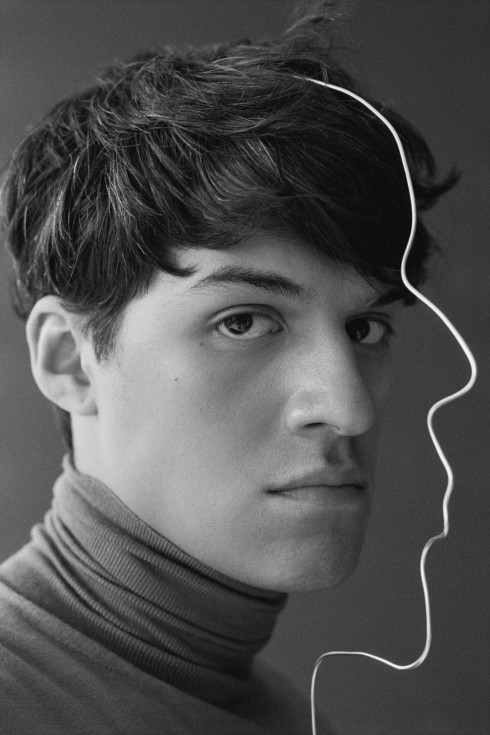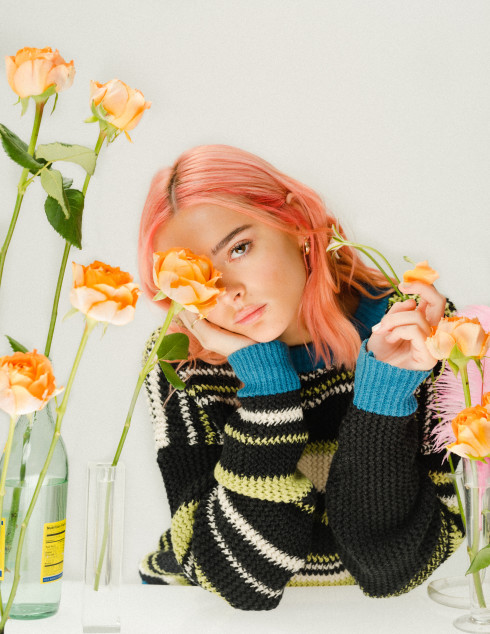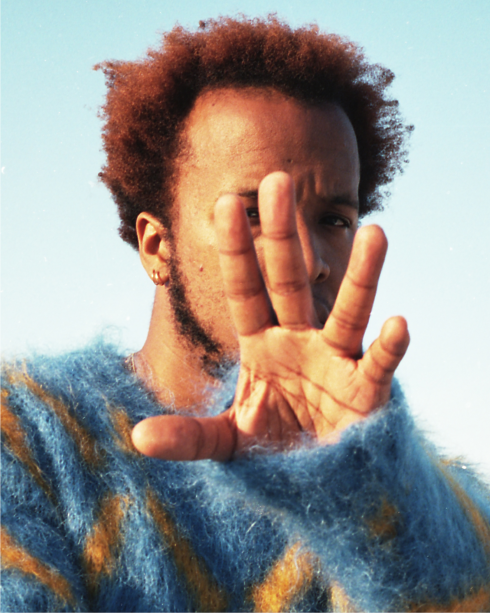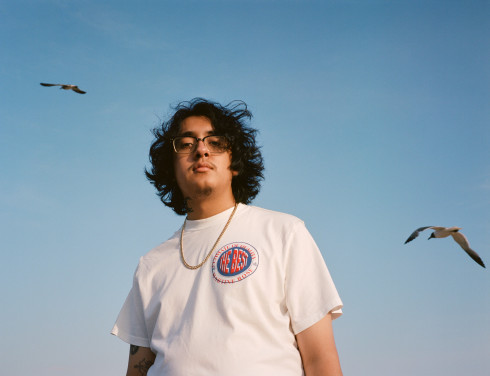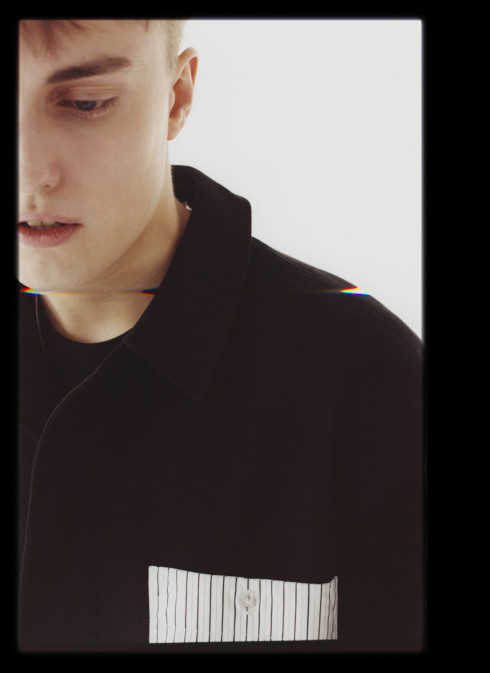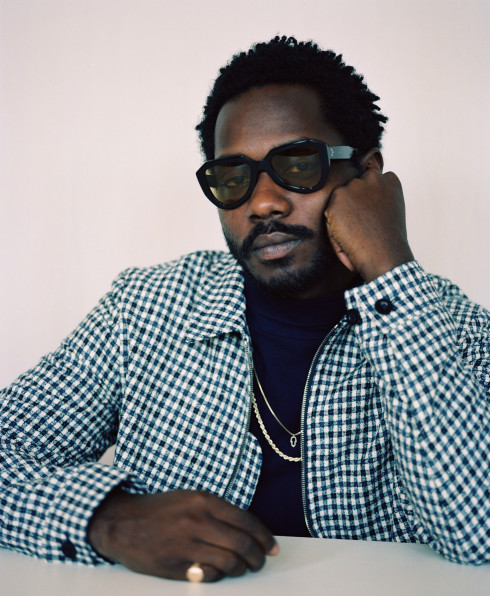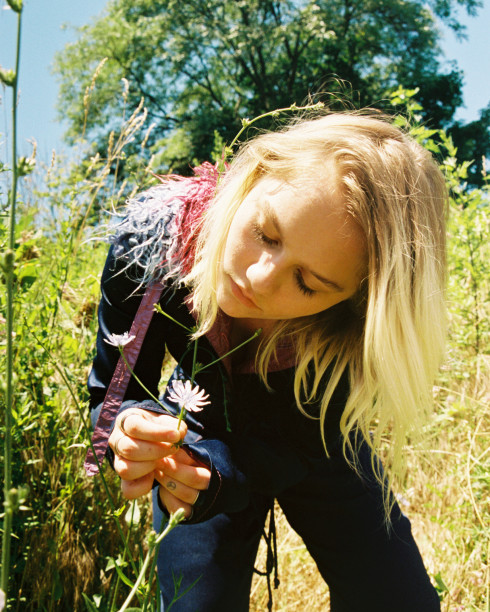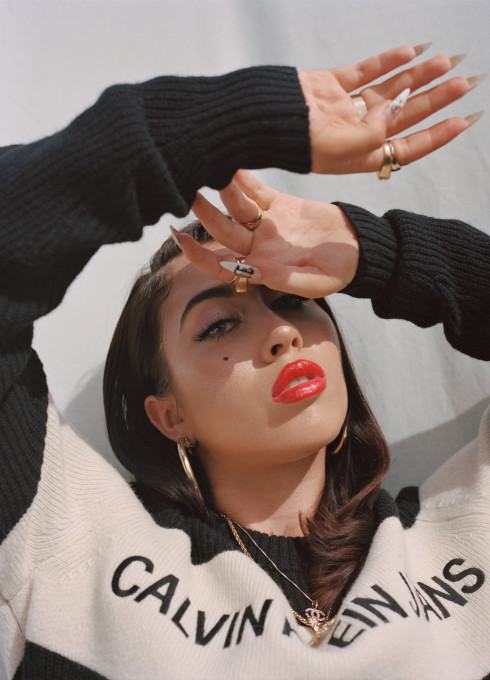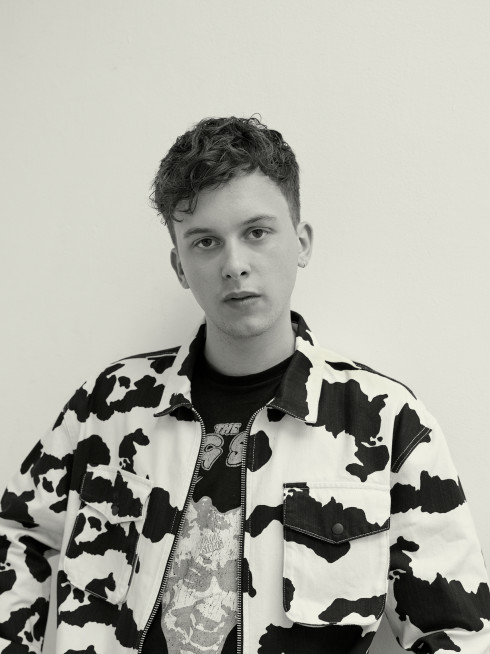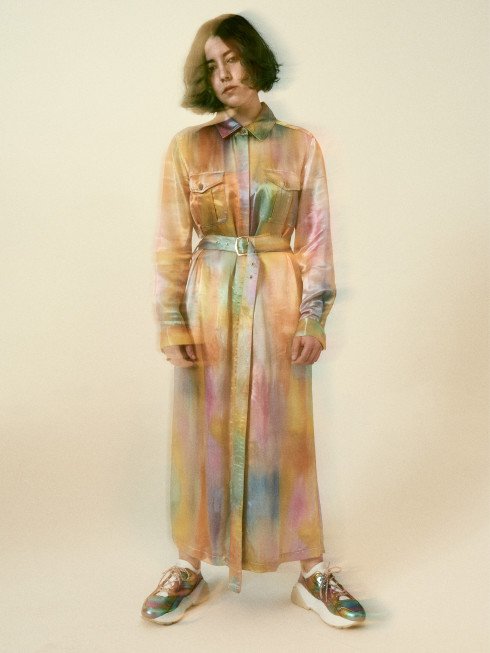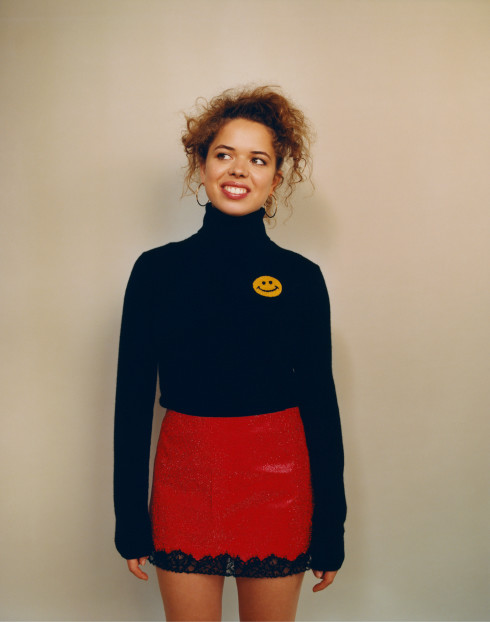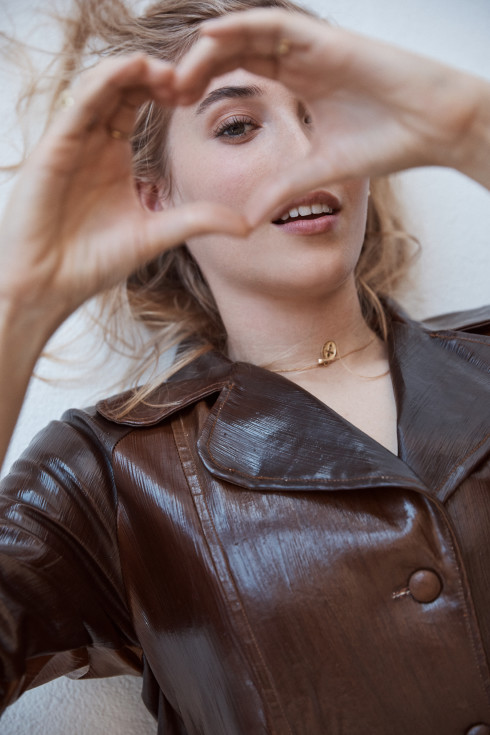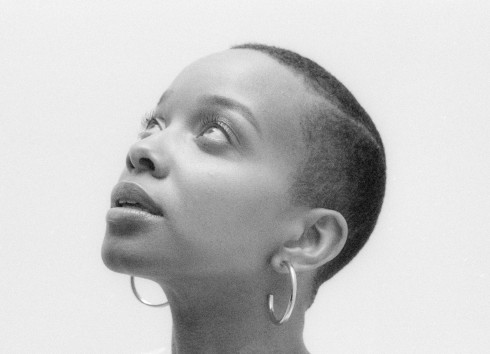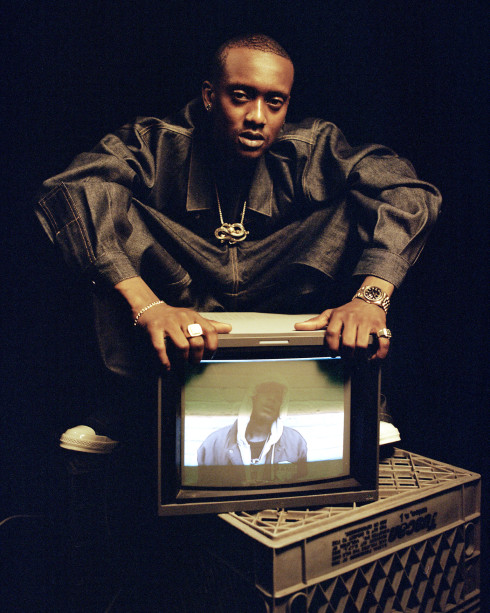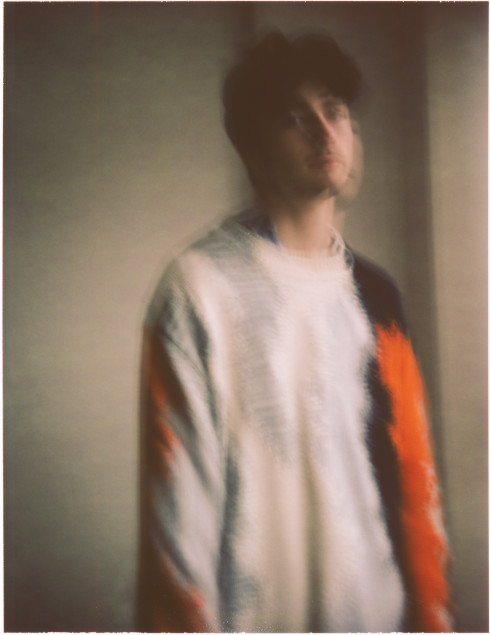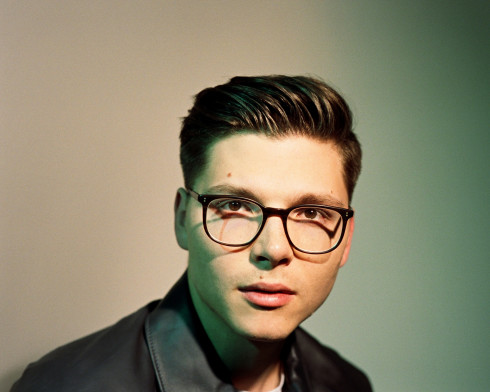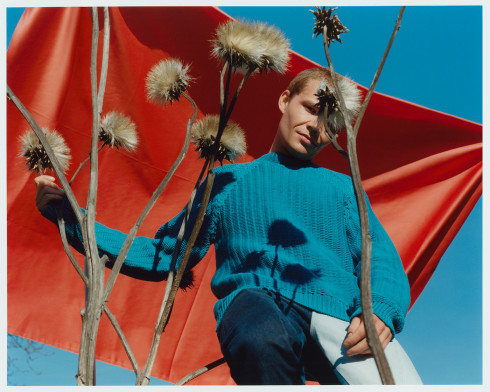
- By
- Harvey James
- Photography by
- Edd Gregory
Primavera Sounds Kicks Off Summer Festival Season in Barcelona
Two weeks ago, Primavera Sound took over a neat, tourist-sparse corner of Barcelona. Over nearly two decades, the festival has hosted major acts like the Arctic Monkeys, Arcade Fire, Queens of the Stone Age, Kendrick Lamar, and Neil Young, but this year saw its most eclectic, palm-sweatingly exciting lineup yet, with big names such as Tame Impala, Solange, James Blake, Charli XCX, Janelle Monáe, Erykah Badu, Christine and the Queens, Mura Masa, and Mac DeMarco playing. But the real strength came in the diverse breadth of mid-sized and smaller acts fleshing out the lineup, such as Snail Mail, Kali Uchis, Soccer Mommy, Big Thief, Danny Brown, Yves Tumor, Tirzah, Loyle Carner, Kurt Vile, Courtney Barnett, slowthai, Yung Beef, and Alice Phoebe Lou, to name only some.
Primavera took place from May 30 to June 1 in Parc del Fòrum, a vast event space that cusps the Mediterranean’s edge. The concrete edifices littered the landscape like a Windows 95 screensaver brought to life, brutal and computer generated, giving the festival a kind of clumsy beauty that slowly got under the skin. By the end of the weekend, due to either tiredness or inebriation, the landscape increasingly appeared as a magical cornucopia of harsh concrete, great vistas of ocean, grassy verges, and idyllic beaches.
The weekend kicked off with Alice Phoebe Lou on the Primavera stage, where the still-strong Spanish sun burned down and the crowd swayed to her swooning indie-folk. She was enchanting, with some proclaiming hers the best performance of the night, but perhaps the end of her set just initiated the death of our collective memory. It’s hard to tell. We swayed in the sun, chatting and easing our way into the chaos. Her sweet melodies and cool guitar sounds were relaxing, but drug dealers swarmed like pesky mosquitos, perhaps drawn by my offensively loud shirt, Nineties Anastasia sunnies, fluorescent bumbag, and battered Reebok trainers, which seemed to proclaim an unsubstantiated love for pills.

Next up was Mac DeMarco on the main stages—plural, because the main area resembled a soccer pitch with two stages facing each other, batting the audience back and forth with the astroturf helping to cushion some of the thirty-five thousand steps on average that would rack up each day. DeMarco and his ramshackle, hilarious band gave an energy-filled performance. At one point, the guitarist pointed out to the sea and said, “You see that boat out there? We’re going to blow that boat up in three, two, one,” as the crowd joined in the countdown. Naturally, the yachters were safe from their stoner humor. DeMarco put on an almost karaoke-like, caricatured performance of “My Old Man,” while the rest of his set interwove old tracks with his new album (which fared much better live than they did recorded) and his soulful, improvised guitar solos sat majestically in the groove.
Then we traversed the bridge, a looping metal connector that took us to the business end of the festival, aka the dance stages. Throughout the festival, the Cube stage became an unexpected favorite, a techno-utopia where your limbs could let loose without the pressure of really trying to enjoy your favorite bands.
If you’ve not had the pleasure of a Yaeji DJ set, seek it out. At the furthest edge of the festival, on the sand-locked Lotus Stage, the Korean-American performed an insouciant, energetic blend of singing, DJing, and dancing. The wholesome, ice-cool dance blend of it came out of nowhere—listening back to her songs now gives me goosebumps. Rounding off the night on the sandy dance dunes was the English electronic duo Maribou State, who put on a flawless set, totally different to the lights, fanfare, and streamers of their performance just the week before at All Points East in London, showing their incredible versatility.

The first and last thing we saw each day was a gargantuan photovoltaic sail, right in the middle of the grounds. It became a fitting symbol for Primavera 2019, standing on two chunky concrete legs and extending twenty meters up with an expansive solar panel that angled itself up towards the sky, suggesting its autonomy. Each day, during the thirty-minute beachside stroll down to the festival from our hotel in Poblenou, it was always the first object our eyes set upon. Inside the festival area, when the sun set each night, the light filtered through the slats in its roof, casting a great shadow over two marooned stages, Adidas Originals and Pitchfork. As the festivalgoers meandered around with the distant beats of bands playing to huge crowds and distant roars echoing, the sun eclipsing the earth, and a beer in hand, the sail became synonymous with this moment of distance, an oasis to step back onto and smile. This transition happened every night and every time it would be just as beautiful as the last.
The solar panels served to represent this festival because Primavera is aware of its social and environmental impact and is constantly pushing to be more sustainable, more inclusive, and slicker each year. It has a brilliant cup deposit scheme, is supported by Greenpeace, is a Greener Festival Associate, has a carbon emission offset scheme in place, and only uses LED lighting on its stages. This year was dubbed “The New Normal” for its commitment to a fifty-fifty artist gender split, achieving a final tally of 50.77% female, 41.92% male, 6.53% mixed projects, and 0.76% non-binary. Marta Pallares, one of the organizers, told BBC1’s Newsbeat, “It’s not difficult once your mind is set,” but it was the first European festival ever to achieve this. Not only did this diversity make for an eclectic and, more importantly, incredible lineup, but I’ve also never been to a more relaxed, easily enjoyable, and (buzzword) inclusive festival than this one. If this is the new normal, fuck the old normal of being shouted at by weirdly aggressive groups of older men desperately trying to prove they can still have fun.
That’s not to say performative masculinity didn’t exist; a friend described the atmosphere at Tame Impala as having “Big Dick Energy,” and I’d have to agree. But if Tame Impala was the only place that conjured up BDE, it’s safe to say there wasn’t much of it elsewhere at the festival. Tame Impala is resolutely my favorite band of all time, but maybe because of all this energy, I had one of the worst experiences watching them. I wanted it all and I wanted it all too much. My musical penis was left limp, sad, and swinging.
This one, less virile memory is eclipsed by an incredible plethora of experiences throughout. Primavera, with all of its special stages, incredible acts, and impeccable organization, became the host of some unforgettable moments. There was Solange’s unfathomably long speech, some thinking it “beautiful and impassioned” and others “a self-obsessed, God-baiting, Messiah-like preachiness to the feral underlings that just came to hear some pop bangers and perhaps not to find faith in the bottom of a gin-filled Capri Sun.” And James Blake, who, despite beginning at 1:25 AM (not an ideal time for the soporific), added a longer and heavier techno breakdown which shook life into the crowd. His voice, as ever, was untouchable. His last song, “Don’t Miss It,” is still wedged in my mind as a touching (basic white boy) moment. Tame Impala’s light show was next level. On the platooned OCB Paper Sessions stage overlooking the sea, we saw the wailing Japanese indie band Chai perform in a sun-kissed moment of hilarity and prescience; Janelle Monáe calling people onto the stage to show her if they “got the juice,” her powerful voice, enchantingly cool costumes, immense dance crew, and her dancing, all the while, cooly unfazed by mishaps; Miley Cyrus’ touching cover of “Jolene;” even Kurt Vile, sat, smoking in the sun, hit new levels of cool. But Jungle I would crown my favorite act of Primavera for the sheer, unbridled joy the band gave me.

One integral memory lies off-kilter, out-of-line, and distinctly separate to the overwhelming celestial brilliance of this Spanish festival. It is a particularly lacerating, barbaric memory that came not from a band, dancer, or artist, but from a stage. And it was the one stage I never went into.
In the dying hours of the final night, a single crack appeared in a wall. It emitted a fierce red glow, almost like there was a chink in the earth’s crust and the mantle, with its volumes of devilish lava, flowed beneath. Unsurprisingly, a heart-pounding, hardcore techno beat could be heard blasting out of it. It looked like the entrance to hell. People queued with their irises removed, edging, needing to get in, to see. A festival is an oscillation of emotion, it’s never permanently ecstatic, even though that is how we remember it. It bandies back and forth between exaggerated highs and back to middle ground, then in the following days, the low are gone. In those lows, we find meaning in the highs and all that bollocks. But never before had the coming together of two celestial spheres been so close or apparent at a festival. The firebreathing glitch in the landscape felt as though reality was beginning to disappear, in small chunks, peeling off. It was mesmeric.
If a festival is a swirling phantasmagoria: awe at musicians, moments of clarity, elation, arm-in-arm singing, famous acts, niche small bands, embarrassment, unexpected people, and irreplaceable memories, then the nineteenth edition of Primavera Barcelona was the greatest single stringbound parcel of them all.
- By
- Harvey James
- Photography by
- Edd Gregory
